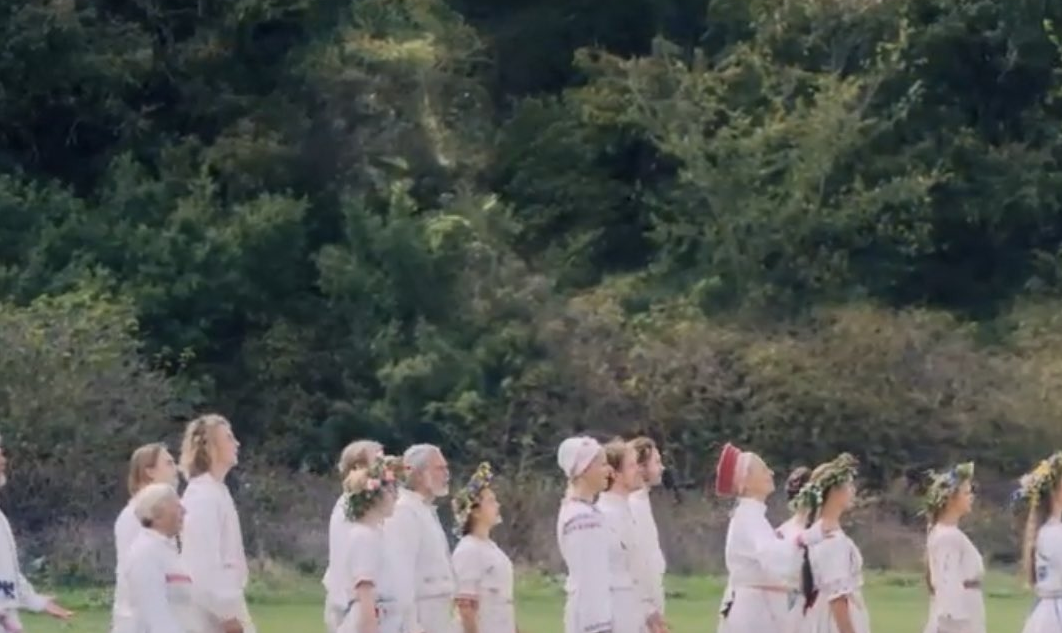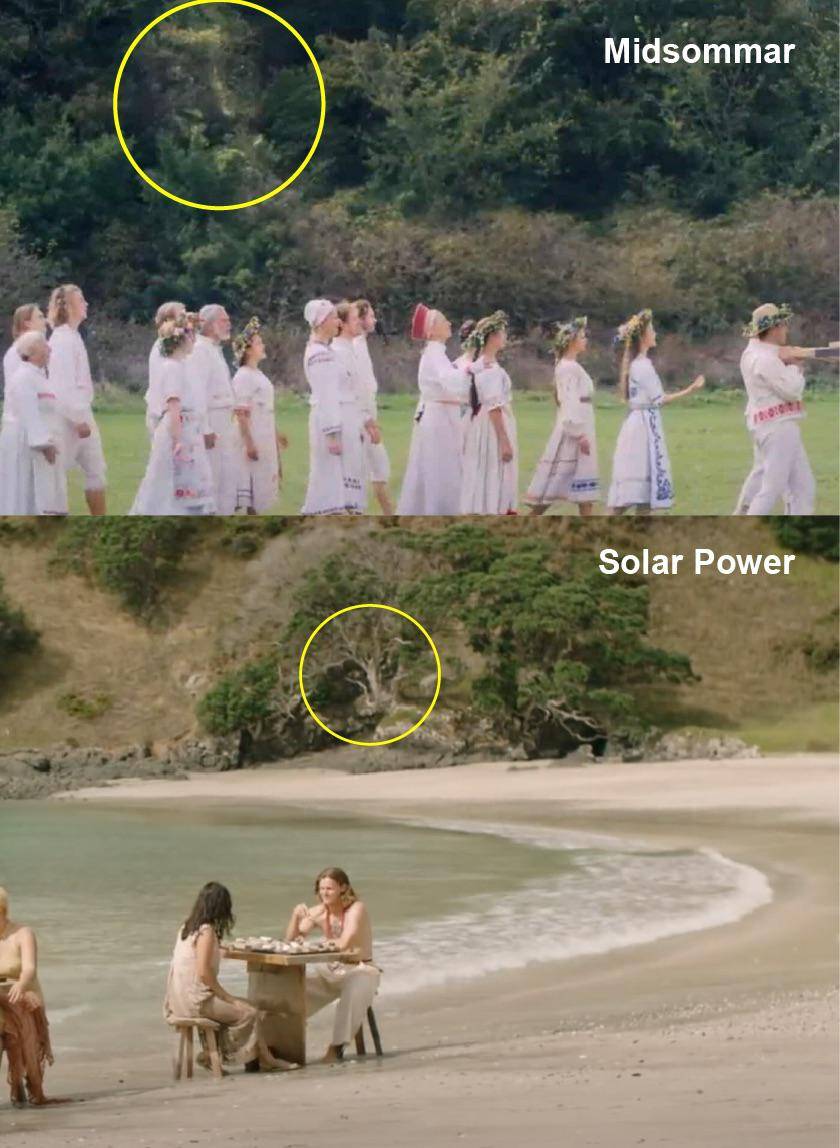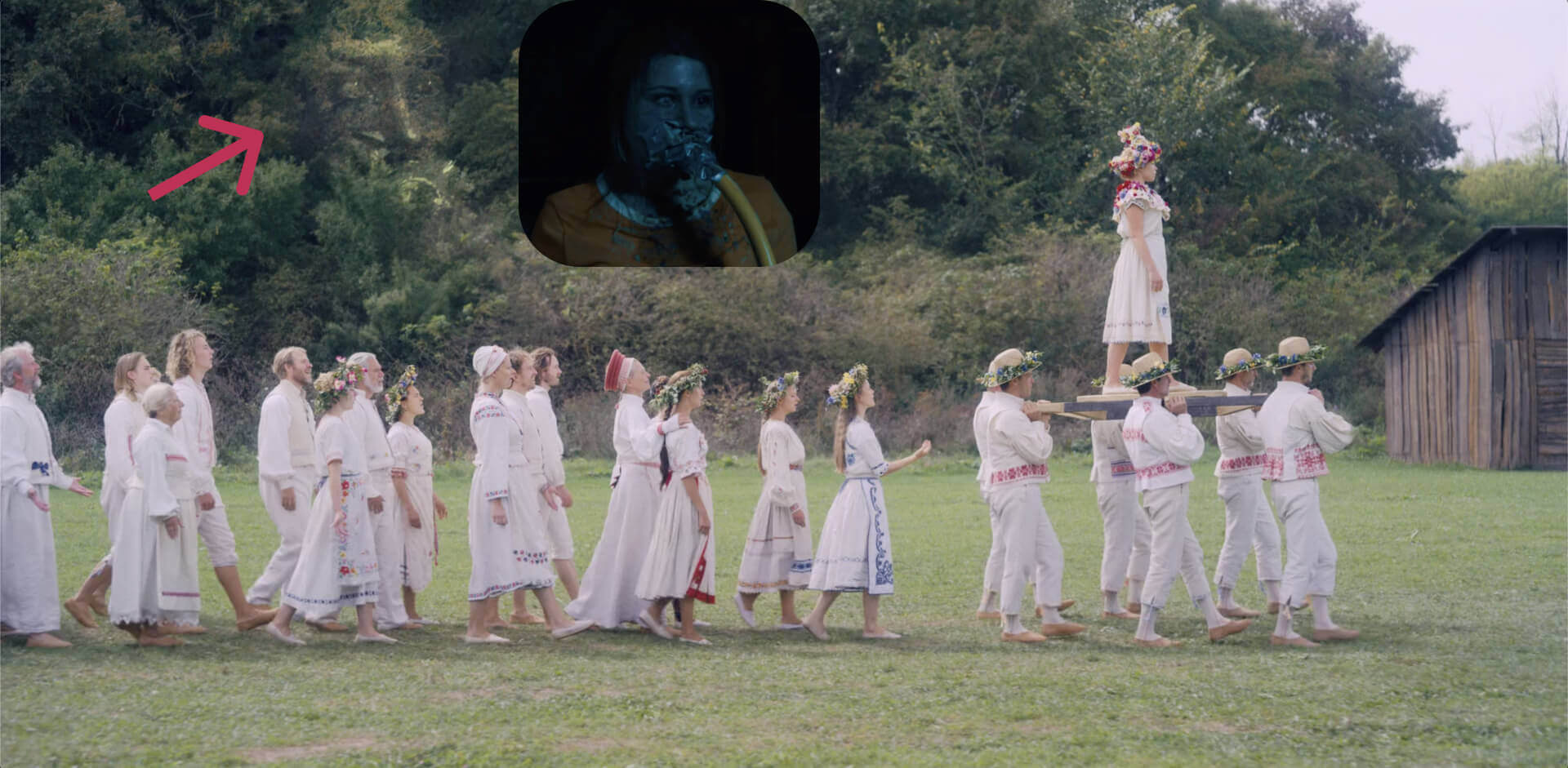Do you dare to delve into the sun-drenched horrors of Ari Aster's "Midsommar"? Prepare yourself, for this film isn't just a horror movie; it's a meticulously crafted descent into grief, manipulation, and the unsettling power of community, where every frame holds a secret and every detail contributes to its unsettling brilliance.
Released in 2019, "Midsommar" quickly cemented its place in the pantheon of modern horror, not for jump scares or gratuitous gore, but for its slow-burn psychological dread and the way it burrows under your skin. The film, a product of writer and director Ari Aster's unique vision, takes us to the remote Swedish commune of Harga, where a group of American students, led by the emotionally stunted Christian, have traveled to observe the midsummer festival. This seemingly idyllic setting, bathed in the perpetual light of the Scandinavian summer, gradually reveals a darkness that will consume them all, especially Dani, whose recent family tragedy has left her vulnerable and ripe for exploitation.
But who is the master mind behind this brilliant movie, let's find out:
| Full Name | Ari Aster |
| Born | July 15, 1986 (age 37 years), New York, New York, United States |
| Nationality | American |
| Education |
|
| Occupation | Writer, Director |
| Notable Works |
|
| Known For |
|
| Website | IMDb |
As Aster himself has explained, "Midsommar" was born from a confluence of circumstances. A request from a Swedish company to create a film set in Sweden provided the initial spark, while his own personal experience of going through a breakup fueled the emotional core of the narrative. He decided to combine the two ideas. This blend of inspiration resulted in a film that feels both culturally specific and universally resonant, exploring the pain of loss and the desperate human need for connection, however twisted that connection may become.
The film's initial scenes set a disquieting tone. The audience is immediately plunged into Dani's world, grappling with a family tragedy of immense proportions. Her sister, Terri Ardor (who also serves as a minor antagonist), commits suicide, taking her parents with her in a murder-suicide pact. The horrifying details of this event, particularly the image of the sister's face, with the exhaust tube still duct-taped to her mouth, as she's found by first responders, are shown in the movie. This event becomes a cornerstone of Danis emotional journey. Her boyfriend, Christian, and his friends, initially dismissive of her grief, decide to go on a trip to Sweden. While the trip is meant for a anthropological study, the trip serves as a catalyst for the unfolding horror.
The idyllic setting of the Harga commune, with its vibrant traditions and smiling faces, initially offers a stark contrast to the darkness of Danis world. However, the midsummer festival, with its rituals and communal practices, slowly reveals its sinister undertones. As the days progress, the line between reality and nightmare blurs, and the audience, along with Dani, becomes increasingly aware of the disturbing rituals that are taking place. One of the most memorable and viral moments in the film occurs after Dani is crowned the May Queen. If you look at the trees in the background, you can spot the image of her sister's face, a stark reminder of the trauma that plagues her. Ari Aster masterfully weaves these moments of foreshadowing throughout the film, offering terrifying clues to the impending doom.
- Timmy Thompson Cross Creek Pictures More Unveiling The Details
- Ian Hunter News Music More Latest Updates
Midsommar is filled with numerous hidden details that contribute to its unsettling atmosphere. The movie is not just a collection of scenes; it is a carefully constructed tapestry of symbols, motifs, and foreshadowing. The film is a masterclass in visual storytelling, with every shot carefully composed to convey a sense of unease and dread. One of the recurring elements is the presence of faces hidden within the natural environment. From the subtle suggestion of a face in the trees at the beginning of the film, to the more explicit imagery of the sister's face, the film encourages the audience to constantly search for hidden meanings.
There are layers of symbolism and hidden meanings woven throughout the film. Consider the role of the "skin the fool" game, which might appear to be a childish game but is later revealed to be a horrifying ritual of the Harga. The costume that Ulf (Henrik Norlen) wears is the face of Mark. It is one of many ways the film makes it clear that things are not what they seem in the seeming utopia of Harga. These small details, invisible on first viewing, add more to the overall experience.
The ending of Midsommar is not meant to be a surprise. Rather, the ending is a culmination of the many easter eggs found in the film that make it clear how the tale will conclude. From the beginning, hints and details of the rituals, the sacrifices, and the ultimate fate of the visitors are revealed through visual cues, foreshadowing, and the behavior of the Harga members. In the end, every detail is meant to make the audience feel a sense of dread.
The film's exploration of grief and trauma is central to its effectiveness. Dani's journey, from the devastation of her family tragedy to the gradual detachment from her emotionally unavailable boyfriend, resonates deeply. The film offers a powerful commentary on the ways in which people can be drawn into destructive relationships, particularly when they are feeling vulnerable and isolated. The ending, while horrifying, can also be interpreted as a perverse form of catharsis for Dani, as she finds a sense of belonging and control within the Harga community.
The visual storytelling in "Midsommar" is a hallmark of Ari Aster's direction. The use of bright, unforgiving sunlight, the meticulous framing of shots, and the frequent use of symmetry all contribute to the film's unsettling atmosphere. The contrast between the idyllic setting and the brutal events that unfold creates a sense of cognitive dissonance, forcing the audience to confront the darkness that lurks beneath the surface. The costumes, rituals, and the overall aesthetic of the Harga commune are meticulously crafted, lending a disturbing authenticity to the events.
The film's depiction of the Harga community is equally compelling and disturbing. While initially presented as a welcoming and harmonious society, the community's rituals and practices gradually reveal their sinister nature. The film explores the themes of cultural appropriation and the exploitation of outsiders. The American students are fascinated by the Harga's traditions, but their fascination blinds them to the true nature of the community. The students' casual disregard for the Harga's culture highlights the dangers of romanticizing and objectifying other cultures.
The film offers a powerful commentary on the themes of grief, trauma, and the dangers of toxic relationships. Dani's journey of grief is the narrative heart of the film. Her struggle to cope with the loss of her family, coupled with the emotional neglect she experiences from her boyfriend, makes her vulnerable to the manipulation of the Harga community. This movie shows the human need for belonging and the way individuals can be drawn into destructive groups when feeling isolated and alone.
One of the most unsettling aspects of "Midsommar" is its exploration of power dynamics. The Harga community operates on a rigid hierarchy, and the film reveals the ways in which individuals can be controlled and exploited within a closed society. The American students, who are initially eager to study the Harga's culture, are eventually stripped of their autonomy and forced to participate in the community's rituals. The film's portrayal of the Harga community is chilling, a testament to the dangers of blind faith and the allure of belonging.
Midsommar also serves as a dark commentary on relationships, showing how one can be a victim of emotional abuse. The character of Christian is a source of neglect and emotional unavailability, a stark contrast to the supportive community of Harga. The film explores the idea of a codependent relationship, where one feels compelled to fix another individual. This exploration of unhealthy relationships is one of the movie's most compelling themes.
The films impact stems not only from its visuals, but also from its emotional core. This makes "Midsommar" a powerful and unforgettable cinematic experience. The film's ability to tap into the primal fears of loss, isolation, and the disintegration of the self has made it a standout horror film. The movie's impact is visible in its impact on pop culture.
In essence, "Midsommar" is a complex and multi-layered film that defies easy categorization. It is a horror film, a psychological thriller, a coming-of-age story, and a dark comedy all rolled into one. It is a film that stays with you long after the credits roll, forcing you to confront the unsettling truths about human nature and the darkness that can be found even in the most idyllic of settings. The film's enduring appeal lies in its willingness to explore these difficult themes with unflinching honesty and its ability to create a sense of dread that is both palpable and profound.


